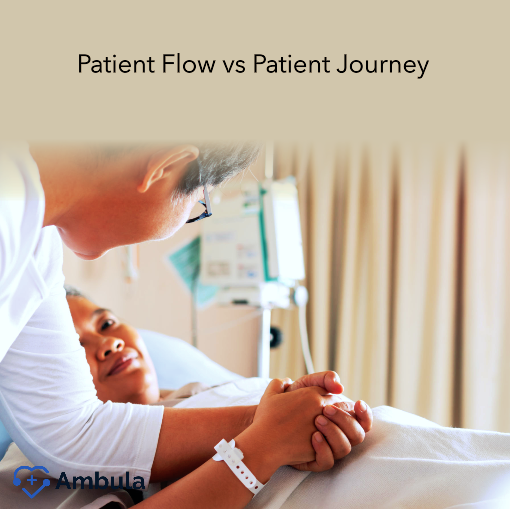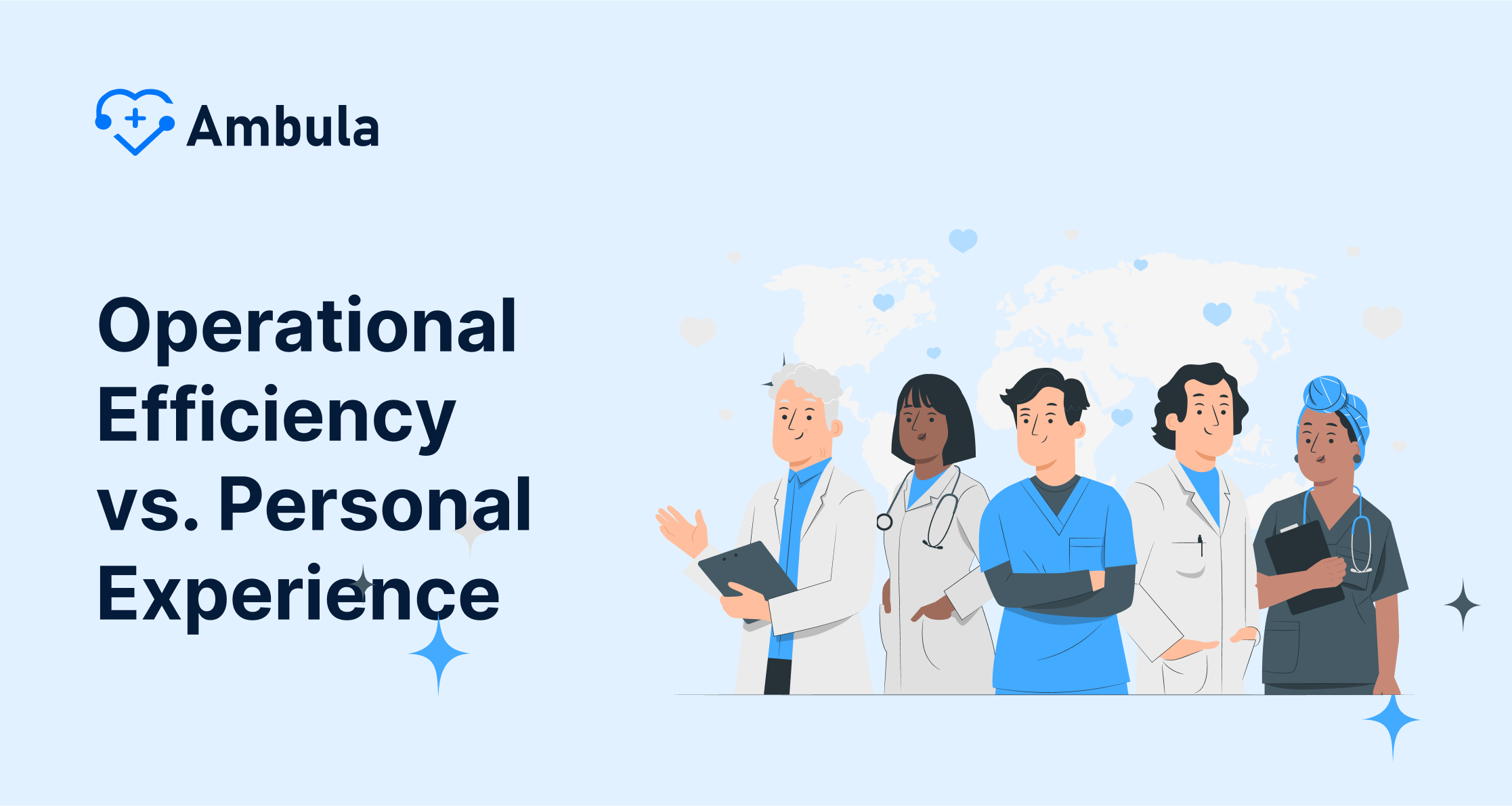
In this ever-evolving healthcare climate, two significant concepts have surfaced: patient flow and patient journey. While both might sound similar, they represent different yet interconnected aspects of patient management. Let’s dive into what sets them apart and why perfecting them matters in healthcare.
Understanding Patient Flow
Did you know that patient flow refers to how patients move within a healthcare setting? It’s all about processes, such as how patients get admitted, transferred, and eventually discharged, like how traffic flows on a highway. A smooth patient flow is all about getting the right patient to the right place at the right time, with no roadblocks or congestion.
But why is it so significant? Imagine ordering your favorite meal at a restaurant only to find out they’ve mixed up your order. Frustrating, right? That’s precisely how it works in healthcare. Poor patient flow can create bottlenecks that slow treatment, affecting patient satisfaction. It can also overwork healthcare professionals and strain resources.
However, when effectively managed, patient flow can drastically ramp up efficiency. It can reduce waiting times, optimize the use of resources, and even improve the quality of care provided. And let’s not forget its crucial role in ensuring a smooth and seamless healthcare delivery process, which brings us to our next topic.
Understanding Patient Journey
Now, let’s talk about something more personal – the patient journey. It’s like walking a mile in the shoes of a patient. Unlike patient flow, which is more about logistics and operations, the patient journey is about the patient’s experiences and narratives from their initial contact with the healthcare system to their recovery stage (hopefully).
Taking our restaurant metaphor a step further, the patient journey is your dining experience from the moment you step in until you pay the bill and leave. How was the ambiance? Was the staff friendly? Did they serve your meal on time, and most importantly, how was the taste? Similarly, in healthcare, it’s about how patients feel and what they experience.
The patient journey maps out every patient’s interaction with the healthcare system. Healthcare providers can use these insights to tailor their services and improve their patients’ experience. After all, happier patients make for better success stories, and these stories are what fuel healthcare providers to continue improving.
Comparing Patient Flow to Patient Journey
Now, let’s pit patient flow against the patient journey. It’s not a boxing match per se, but a comparison of two healthcare heavyweights. While it seems they could be interchangeable, there’s a distinct difference. The first focuses on operational efficiency, while the latter is about individual experiences and narratives.
Digging a bit deeper, patient flow is the groundwork – the basic framework ensuring that a healthcare system operates smoothly, just like how the kitchen needs to function efficiently to deliver your meal on time. On the other hand, the patient journey is more like the seasoning added to our dish. The distinctive blend of individual experiences, the emotional ups and downs, and the personal anecdotes make the healthcare experience unique for each patient.
Patient flow and patient journey might seem like two sides of the same coin, but they’re different and critically essential in their own ways. Perfecting both these aspects can truly pave the way for a holistic and patient-centric healthcare system.
Operational Efficiency vs. Personal Experience
In healthcare, operational efficiency directly translates into how quickly you can move patients from check-in to discharge while maintaining high-quality care.
On the flip side, personal experience is equally important. It’s the journey your patients embark on from the moment they step into your practice. This isn’t just about the treatment they receive but also about how they feel throughout their interaction with your healthcare system. A positive experience can mean clear communication, emotional support, and attention to individual needs.
While you strive for operational efficiency, remember that every patient is a person with unique fears, hopes, and concerns. Patients are not just numbers in a system; they’re individuals who want to be seen and heard. It’s essential to strike a balance – a streamlined healthcare process must also have room for personal touches that can alleviate anxiety and build trust.
Consider this: a study by Deloitte found that hospitals with higher patient-reported experience scores tend to have higher profitability. This suggests that investing time in personalizing patient experience doesn’t just benefit your patients; it can also positively impact your bottom line.
Leveraging technology can help. For example, a digital check-in system might speed up the admittance process while also providing an opportunity for patients to communicate their concerns and preferences, tailoring their journey from the outset.
However, technology alone won’t solve everything. Encourage your team to maintain a human connection. Small gestures, like a warm greeting or taking a moment to explain the next steps, can alleviate stress and contribute to a better overall patient experience without sacrificing efficiency.
In essence, combines the power of operational efficiency with the art of personal experience. Keep these dual objectives in harmony, and you’ll see smoother processes and happier patients who are more likely to return and possibly refer others to your practice. After all, healthcare is as much about healing hearts as it is about healing bodies.
The Impact of Patient Flow on Patient Journey
There’s no denying that patient flow and patient journey are inherently intertwined. A well-managed patient flow can significantly impact a patient’s journey and vice-versa. Consider this: if a hospital has good patient flow, patients are seen promptly, without unnecessary delays or obstacles. Sounds perfect, doesn’t it?
Now, think about it from a patient’s perspective. If you’re sick, the last thing you want is waiting in endless queues or being transferred from department to department without proper guidance. A smooth flow means less anxiety and confusion. It might even result in receiving full attention from doctors and not feeling rushed during consultations. And those factors make a huge difference in a patient’s healthcare journey.
Yet, an efficient patient flow doesn’t solely guarantee a good patient journey. Even if the hospital operates on a well-oiled patient flow, the patient journey could falter if the quality of care, interpersonal engagement, or empathy from healthcare providers is lacking. And then we have the subjective aspects, like a patient’s personal perception of their experience, which, I’ll admit, could be trickier and more fluid.
Case Studies
Let’s bring some real experiences into the mix. In one clinic, patients were experiencing long wait times due to inefficient patient flow, negatively affecting their overall journey. A thorough analysis revealed the need for better organization of clinic processes, such as scheduled appointments and staffing. After implementing changes, the clinic noticed a significant reduction in waiting times. Patients were happier! But more importantly, the staff also felt a reduced burden of chaos in handling incoming patients.
In another study involving a large metropolitan hospital, administrators made considerable changes to enhance patient flow. Hospital beds and staffing were utilized more effectively, reducing bottlenecks in patient admission and transition processes. The end result? A noteworthy increase in patient satisfaction scores. However, the hospital also understood that even with more efficient patient flow, the patient journey could be influenced by factors such as privacy, empathy from staff, and communication of clear treatment plans.
The Challenges in Balancing Patient Flow and Patient Journey
It all seems pretty straightforward until you get into it. Balancing patient flow and patient journey is more of a tightrope walk than an easy cruise. Healthcare professionals must ensure efficient operation without compromising on the empathetic, human side of healthcare.
Take wait times, for example. While shortening them helps improve patient flow, it shouldn’t compromise consultation time- a crucial aspect of the patient journey. Patients should not feel part of a conveyor belt assembly, right? Healthcare professionals should have ample time to understand their concerns, propose solutions, and ensure patients leave feeling well cared for.
Different patient expectations also pose a challenge. Each patient has unique needs, and defining what constitutes a good ‘journey’ might vary considerably. Therefore, the challenge becomes about personalizing experiences without interrupting seamless patient flow.
The tightrope walk involves creating a healthcare setup that ensures efficient patient flow while nurturing individual, personalized experiences that contribute to a meaningful patient journey. Not an easy feat, but one worth striving for!







